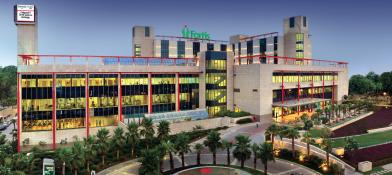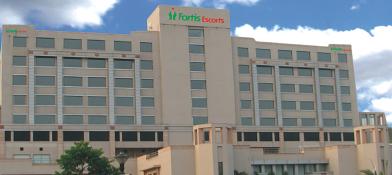ACL Reconstruction
Overview
ACL injuries are common in athletes and active individuals, impacting knee stability. Reconstruction varies based on injury severity and rehabilitation adherence. Consulting with healthcare professionals for evaluation and personalized treatment is vital. Let's delve into ACL reconstruction, covering indications, surgery, rehab, and outcomes.
Understanding ACL Injuries
The ACL is a major knee ligament that is crucial for stability by preventing excessive forward movement of the tibia relative to the femur and controlling knee rotation. Injuries frequently happen during sports or accidents involving sudden twisting, hyperextension, or direct blows to the knee and may result from pivoting, abrupt stops, or improper landings from jumps.
Indications
ACL reconstruction is recommended for individuals who experience the following:
- Complete ACL Tear: A full tear of the ACL often requires surgical intervention as it lacks sufficient blood supply for natural healing.
- High Activity Level: Active individuals, especially athletes in sports like soccer or basketball, may choose ACL reconstruction to restore knee stability and minimize the chance of further injury.
- Persistent Instability: If conservative treatments, such as physical therapy and bracing, fail to alleviate symptoms of knee instability, surgical intervention may be considered.
The ACL Reconstruction Procedure
Graft Selection: ACL reconstruction involves replacing the torn ligament with a graft. The graft can be an autograft (tissue from the patient's body) or an allograft (donor tissue). Common autograft options include the patellar, hamstring, or quadriceps tendon. Allografts are obtained from cadavers and are an alternative for patients who prefer not to use their tissue.
Surgical Technique: The surgical technique for ACL reconstruction commonly employs arthroscopy, a minimally invasive approach utilizing small incisions, and an arthroscope, a camera-guided instrument. The surgeon removes the damaged ACL remnants and prepares the knee for the graft. The graft is then positioned and secured in place using screws, sutures, or other fixation devices. Additionally, specialized instruments are used to precisely prepare the bone tunnels and ensure optimal graft placement and fixation.
Rehabilitation and Recovery: After ACL reconstruction, a comprehensive rehabilitation program is necessary to regain stability, strength, and range of motion. Physical therapy exercises focus on strengthening the quadriceps, hamstrings, and hip muscles, improving balance, and gradually returning to sports-specific activities. The recovery period can be extended, but it generally takes several months to resume high-impact activities.
Benefits of ACL reconstruction
ACL reconstruction provides several benefits for individuals who have experienced an ACL injury.
Restored Knee Stability: Surgery aims to restore stability, allowing individuals to engage in activities requiring pivoting, cutting, and rapid direction changes by reconstructing the torn or ruptured ACL.
Improved Joint Function: ACL reconstruction can significantly improve joint function and mobility. After surgery and proper rehabilitation, individuals often experience increased knee strength, improved balance, and enhanced coordination. This allows them to perform daily activities more efficiently and participate more confidently in sports or physical activities.
Reduced Pain and Swelling: ACL injuries often cause pain and swelling in the knee joint. AC reconstruction addresses the underlying cause of the pain by repairing or replacing the damaged ligament. As the knee heals and rehabilitation progresses, individuals typically experience reduced pain and swelling, improving their overall comfort and quality of life.
Prevention of Further Damage: Without intervention, an untreated ACL injury can lead to additional complications, such as meniscal tears, cartilage damage, or joint instability. ACL reconstruction is pivotal in preventing further knee damage by restoring joint stability and minimizing the risk of subsequent injuries. Addressing ACL injuries can help individuals avoid long-term complications that will require more extensive treatments in the future.
Return to Active Lifestyle: ACL reconstruction is particularly beneficial for individuals who want to return to an active lifestyle, especially those involved in sports or physically demanding activities. Restoring knee stability allows individuals to resume their desired activity level, participate in sports, and engage in recreational pursuits with a reduced risk of re-injury.
Psychological Well-being: ACL injuries can have psychological implications, as they can limit an individual's ability to participate in activities they enjoy and affect their overall well-being. ACL reconstruction can have a positive impact on an individual's psychological state by providing them with the opportunity to regain their physical capabilities and return to the activities they love. This can boost confidence, self-esteem, and overall mental well-being.
Risks with ACL reconstruction
ACL reconstruction is generally safe and effective. However, like any surgery, it carries certain risks and potential complications. It's important for individuals considering ACL reconstruction to be aware of these possibilities. Here are some of the potential risks associated with ACL reconstruction:
Infection Risk: Surgery site infection is possible despite precautions like antibiotics and sterile techniques. Treatment may involve antibiotics or drainage if an infection occurs.
Bleeding and Hematoma: Surgery carries a risk of bleeding, possibly leading to hematoma formation. Large hematomas may cause pain and swelling, necessitating drainage.
Deep Vein Thrombosis (DVT): A small risk of blood clot formation may exist after surgery, especially in leg veins. DVT can lead to pulmonary embolism. Preventive measures include early movement and medication.
Knee Stiffness: Some may experience knee stiffness post-surgery, affecting movement. Physical therapy can help, but additional treatment may be needed.
Graft Failure: While ACL reconstruction aims for stability, graft failure can occur due to excessive stress or premature activity. Following the rehabilitation plan helps prevent this.
Persistent Pain: Despite surgery, some may still experience ongoing pain. Management options include medication and therapy.
Conclusion
ACL reconstruction is a surgical solution to restore knee stability and function after injury. Though generally safe and effective, it's crucial for patients to comprehend potential risks. By collaborating closely with healthcare providers, following rehabilitation protocols, and prioritizing recovery, individuals can maximize their outcomes and return to an active, fulfilling lifestyle.
































